From the Library -
Len Mullenger
Flora Londinensis
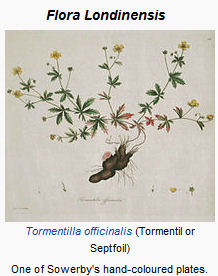
 |
|
William Curtis |
As the title implies this book described the flora
in and around London. It was initially published by William Curtis in
six volumes between 1775 and 1798.
Curtis was Head Gardener (Praefectus Horti) at the Chelsea Physic Garden
before establishing his own London Botanic Garden. The Flora was illustrated
by the botanical artists James Sowerby, Sydenham Edwards and William
Kilburn. It was not written as a scientific document but designed to
appeal to members of the public. Thus plants were not only identified
by latinized binomials but also by the common names that would be recognized
by the public.
This book was much earlier than Paxton's Botany discussed in an earlier
article which was produced between 1834-1839,
a half century later. However the Flora Londinensis was not
a success, selling only 300 copies. Curtis went on to produce from 1787
the Botanical Magazine which was a financial success
and there are 26 volumes in the Charlecote library. This is regarded
as the premier journal in early botanical illustration. This continues
to be published today by the Royal Botanic Gardens, Kew as Curtis's
Botanical Magazine.
The original Flora Londinensis continued to be worked on by William
J Hooker and George Graves who published their edition between 1817
and 1828. Hooker expanded the selection of illustrated plants to include
those from the rest of the UK. This is what we hold in the Charlecote
Library in five volumes published by Henry Bohn in 1817
 There
were two famous botanical Hookers. William J Hooker (1785-1865) was
the father and was Professor
There
were two famous botanical Hookers. William J Hooker (1785-1865) was
the father and was Professor of Botany at Glasgow University where he was a very popular lecturer
and later was the first director of the Royal Botanic Gardens at Kew
in 1841. He was contemporary with Joseph Banks who went on Captain Cook's
first great voyage. Over 80 species of plant have a banksian epithet,
e.g. Hooker’s Orchid Platanthera hookeri. Hooker expanded
Kew Gardens from 10 acres to 75 acres and an arboretum of 270 acres.
When he died in 1865 he was succeeded at Kew by his Son Joseph Dalton
Hooker who became one of our greatest botanists and great friend of
Darwin. He also went on an expedition to the Antarctic on HMS Erebus.
He later went on expeditions to the Himalayas, India, Palestine, Morroco
and in 1877 the United States. In 1844 Darwin mentioned to Hooker his
ideas on the transmutation of species and natural selection and was
of great support to Darwin in the development of his theories which
were eventually published in On the Origin of Species. There
is a copy of the 4th edition of that book in the Charlecote library
too.
of Botany at Glasgow University where he was a very popular lecturer
and later was the first director of the Royal Botanic Gardens at Kew
in 1841. He was contemporary with Joseph Banks who went on Captain Cook's
first great voyage. Over 80 species of plant have a banksian epithet,
e.g. Hooker’s Orchid Platanthera hookeri. Hooker expanded
Kew Gardens from 10 acres to 75 acres and an arboretum of 270 acres.
When he died in 1865 he was succeeded at Kew by his Son Joseph Dalton
Hooker who became one of our greatest botanists and great friend of
Darwin. He also went on an expedition to the Antarctic on HMS Erebus.
He later went on expeditions to the Himalayas, India, Palestine, Morroco
and in 1877 the United States. In 1844 Darwin mentioned to Hooker his
ideas on the transmutation of species and natural selection and was
of great support to Darwin in the development of his theories which
were eventually published in On the Origin of Species. There
is a copy of the 4th edition of that book in the Charlecote library
too.

Further illustrations
http://www.panteek.com/curtisflora/index.htm
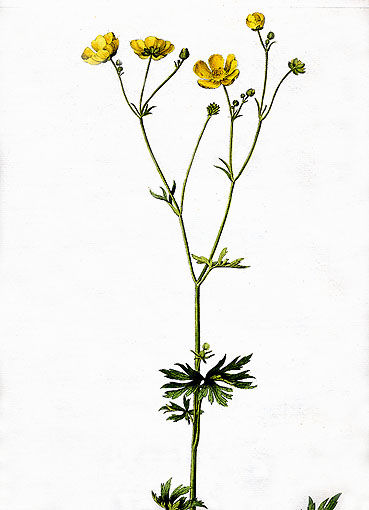
Ranunculus acris (Upright Meadow Crowfoot)
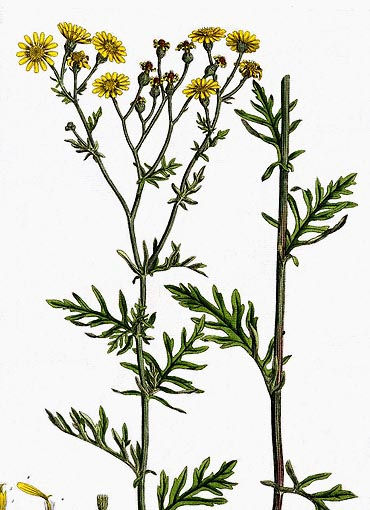
Senecio crucifolius (Hoary Ragwort)
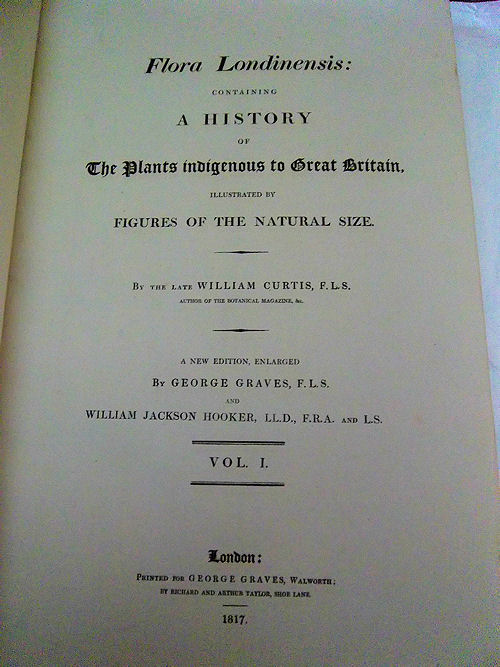
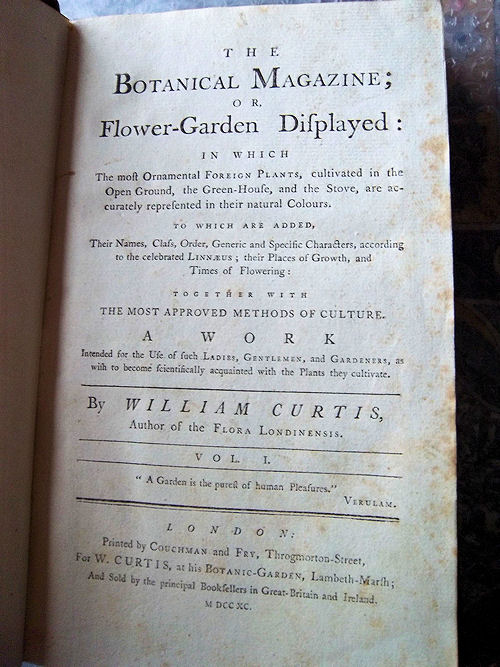
see also
Plant
Explorers
Joseph
Hooker
Len Mullenger is a Sunday volunteer guide. Any comments
are welcome and can be sent to len@musicweb-international.com


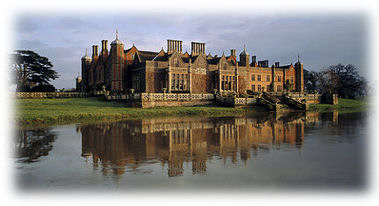
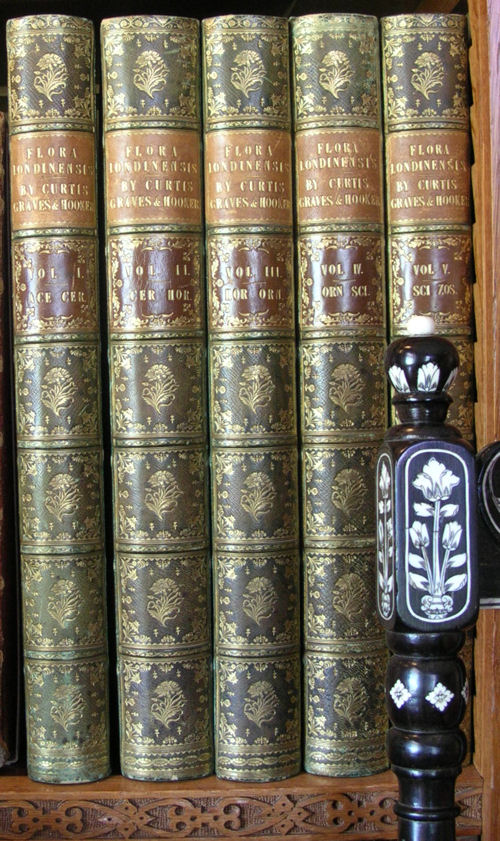
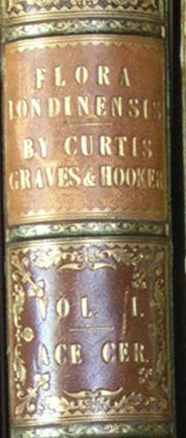

 There
were two famous botanical Hookers. William J Hooker (1785-1865) was
the father and was Professor
There
were two famous botanical Hookers. William J Hooker (1785-1865) was
the father and was Professor of Botany at Glasgow University where he was a very popular lecturer
and later was the first director of the Royal Botanic Gardens at Kew
in 1841. He was contemporary with Joseph Banks who went on Captain Cook's
first great voyage. Over 80 species of plant have a banksian epithet,
e.g. Hooker’s Orchid Platanthera hookeri. Hooker expanded
Kew Gardens from 10 acres to 75 acres and an arboretum of 270 acres.
When he died in 1865 he was succeeded at Kew by his Son Joseph Dalton
Hooker who became one of our greatest botanists and great friend of
Darwin. He also went on an expedition to the Antarctic on HMS Erebus.
He later went on expeditions to the Himalayas, India, Palestine, Morroco
and in 1877 the United States. In 1844 Darwin mentioned to Hooker his
ideas on the transmutation of species and natural selection and was
of great support to Darwin in the development of his theories which
were eventually published in On the Origin of Species. There
is a copy of the 4th edition of that book in the Charlecote library
too.
of Botany at Glasgow University where he was a very popular lecturer
and later was the first director of the Royal Botanic Gardens at Kew
in 1841. He was contemporary with Joseph Banks who went on Captain Cook's
first great voyage. Over 80 species of plant have a banksian epithet,
e.g. Hooker’s Orchid Platanthera hookeri. Hooker expanded
Kew Gardens from 10 acres to 75 acres and an arboretum of 270 acres.
When he died in 1865 he was succeeded at Kew by his Son Joseph Dalton
Hooker who became one of our greatest botanists and great friend of
Darwin. He also went on an expedition to the Antarctic on HMS Erebus.
He later went on expeditions to the Himalayas, India, Palestine, Morroco
and in 1877 the United States. In 1844 Darwin mentioned to Hooker his
ideas on the transmutation of species and natural selection and was
of great support to Darwin in the development of his theories which
were eventually published in On the Origin of Species. There
is a copy of the 4th edition of that book in the Charlecote library
too. 



